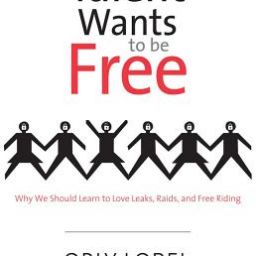
The book is divided into four main sections — on the public commons as a physical space, on the public commons of patents, plants, and cultural knowledge, on taxidermy(!), and the public domain (Kipling and Disney). The book will be highly useful to those trying to understand public domain and commons issues from a non-law perspective — for those who are familiar with the names, if not the works of Jurgen Habermas, John Locke (not the one on Lost), and Henry Jenkins. Unlike some other books I’ve read by those without a legal background, the law is not stated inaccurately (Debora Halbert’s Resisting Intellectual Property Law is another great book in this subgenre).
All of the sections were interesting (including the section on taxidermy) and were based around the locus of jungle as place and idea, though I kept thinking of Sepultura while reading the plant/patent section. But considering the focus of this blog, the most useful sections to me involved copyright, cultural preservation, and cultural identity.
Wirtén defines what makes the intellectual commons different from a physical land commons:
The information commons is simply made of a very different raw material than soil, turf, and grass. Information-based resources are both non-rival (my use of information does not hinder yours; in fact, you and I can use the same resource simultaneously with no detrimental effect taking place), as well as non-excludable (intially, information can be costly to produce, but new technology makes it difficult to hinder an infinte number of users at zero marginal cost).(41)
Yet she sees that viewing the information commons with “an aura of utopia” is not a full picture:
Not seeing the internal lacerations, rips, and conflicts of interest contained within the public domain and the commons is more than counter-productive; it is dangerous. …Xenophobia, separating ‘us’ from them,’ is an element of the commons economy that displays its fair share of the ‘parochial and exclusive.” Disregarding the more unsavoury geopolitical realities of the information commons is to underestimate the sophistication of the power relations….(45)
Wirtén discusses the importance of libraries and other keepers of culture:
To answer the question of how precisely copyright affects cultural heritage institutions negatively, we must return … to … use. Libraries … [serve as ] symbolic space [as] both keepers of the material object the book and and in the sense of transmitting the content kept within that particular receptacle.
… At the same time, as libraries keep our books in trust for future generations, however they do this independent of the limitations posed by either material object or building. …Libraries today provide us with cultural works detached completely from traditional materiality.(131)
But she understands that technology is not a panacea or replacement for cultural institutions:
We have an extremely strong faith in the power of technology today — borderline religious zeal, even — to preserve and disseminate cultural expressions forever. We should be more skeptical about the presumption of eternal informational life. Similarly, we must not always assume that the separation of knowledge of use from the resource in question does not have an impact on the information carried by that resource, even when disembodied from its original host and made into bits and zeros that can be shared and reproduced infinitely. (149)
Wirtén discusses the ongoing impact of copyfraud, weakening the information commons:
A web of legal and extralegal control stations are posted everywhere, and if you are not vigilant, or just easily intimidated (which is is not that uncommon, considering the media coverage that surrounds copyright), you might end up paying for access to works that are in the public domain. Unfortunately, museums , archives, and universities whose role is to promote access to their materials, and who are among those hardest hit by and the most vocal opponents of intellectual property expansionism, are found among the offenders. (106)
Highly recommended, especially for those willing to see where the discussions of the intellectual commons can go, looking for the jungle’s “productive, rather than destructive” elements.(9)





Great post! I?m just starting out in community management/marketing media and trying to learn how to do it well – resources like this article are incredibly helpful. As our company is based in the US, it?s all a bit new to us. The example above is something that I worry about as well, how to show your own genuine enthusiasm and share the fact that your product is useful in that case
Thank you, this post has been very worthile to read, I look forward to reading through more of this website.